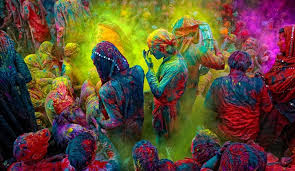Diwali About
Diwali celebrates to victory of the Good over the Evil and Light over Darkness. Is has a major religious significance for Hindus, Sikhs and Jains alike – not only in India, but also for Indians living abroad. In the western (gregorian) calendar, Diwali falls on a day in October or November every year – just after the monsoon season in India. The exact date varies and is being calculated based on the Hindu Luni-Solar calendar (according to the positions of the Sun and the Moon).
The day of Diwali falls on Ashvina Amavasya (the lunar day of new moon) on 15 Ashvin (Hindu month). This date also marks the beginning of the Hindu New Year, and many businesses in India starting a new accounting year on the Diwali holiday.
Diwali is a festival over 5 days. On the first day (Dhanteras) people pray to Goddess Laxmi for prosperity and wealth. The second day (Choti Diwali) is also known as ‘Small Diwali’, ‘Naraka Chaturdashi’ or ‘Kali Chaudas’ in some states. According to the legend, Lord Kirshna killed the evil daemon Narakasura on this day. People worship Goddess Lakshmi and Lord Rama.
The third day is the actual day of Diwali. Many devotees visit their Temples for worshipping Lakshmi, Goddess of beauty, wealth and wisdom with Laxmi Poojas and also pray to Ganesh, the ‘Lord of Beginnings’ and ‘Remover of Obstacles’. When Aarti is performed, oil lamps with a cotton wick are placed on a Puja Thali and offered to the deities, praising the deity by singing wonderful Aarti songs.
At night people light up little oil lamps called Diyas, Dipa Lights or Ghee Lamps and place them around their houses. They hang colorful lanterns and fairy lights, enjoying firework displays or blasting firecrackers. The forth day (Padwa) is 1 Kartika in the Hindu calendar and is also known as Govardhan Puja or Annakoot. It is said that Krishna defeated the god of rain and the heavens Indra on that day.
He lifted Mount Govardhana to save people’s life from the floods. On this day people cook mountains of food resembling Mount Govardhana. According to another legend followed in South-India, Vishnu defeated the demon-king Bali on this day. Finally the fifths and last day of Diwali is called ‘Bhaiduj’ (‘Bhai Dooj’) also known as ‘Yama Dwitiya’.
This is the day for brothers and sisters to strengthen their relationships. Just like Yami prayed for her brother Yama (God of Death), sisters are praying for their brother’s well-being on this day, and brothers give little gifts to their sisters in return.
On Diwali families gather and eating lots of foods and sweets. It is also common to send Diwali greeting cards to family members, relatives and friends. Recently however it is becoming more popular to send Diwali eCards or Diwali SMS. Diwali Mela (Fairs) take place not only in India, but in many countries in the world.


.jpg)







